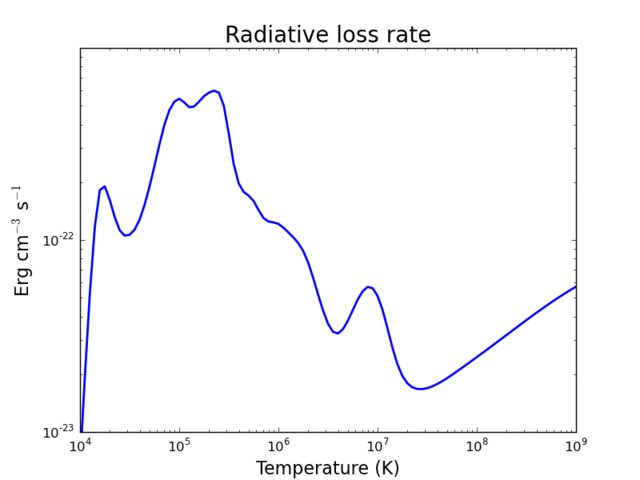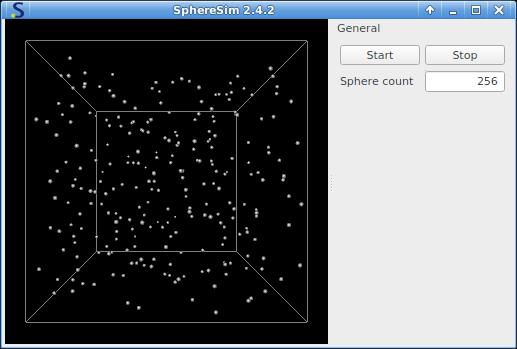ChiantiPy is the Python interface to the CHIANTI atomic database for astrophysical spectroscopy
What is CHIANTI
The CHIANTI provides a database of atomic data that can be used to interpret the emission of spectral lines and continus emitted from high-temperature, optically-thin astrophysical sources. The CHIANTI project provides a suite of routines written in Interactive Data Language (IDL) to access the database and calculate various quantities for use in interpreting observed spectra or producing synthetic spectra.
Getting started with ChiantiPy
Prerequisites
* Python ( latext 2.X version; not compatible with version 3.X )
* Numpy
* Scipy
* Matplotlib
* [Optional] PyQt4 or wxPython
* CHIANTI, the atomic database for astrophysical spectroscopy
In addition, the FortranFormat module from Scientific Python, developed by Konrad Hinsen of the Centre de Biophysique Moleculaire (http://dirac.cnrs-orleans.fr/ScientificPython/), is included in this distribution for simplicity.
Installing the CHIANTI database
The gzipped data tar ball can be downloaded from the CHIANTI website
* put the file in a convenient directory, cd to the directory and untar the file
* ChiantiPy uses the environment variable XUVTOP to find the database. Set XUVTOP to the name of the directory where the CHIANTI data tarball was placed. For example
> setenv XUVTOP /data1/xuv/directory.where.the.tarball.was.placed
Some sites have the CHIANTI database maintained as part of a SolarSoft distribution. In that case, simply set XUVTOP to the directory were it exists, usually something like $SSW/packages/chianti/dbase
Installing the ChiantiPy package
The ChiantiPy package can be downloaded from the ChiantiPy, untar it, cd to the directory where it was unpacked, and then, as root
> python setup.py install
If you do not have root privileges, simply put the ChiantiPy directory (simply called 'chianti') in your PYTHONPATH
Running ChiantiPy
The documentation can be found on its web page ChiantiPy
In particular, a quick start guide is included which should get you up and running fairly quickly.
eeping track of ChiantiPy
There is a mailing list that you can subscribe to at https://lists.sourceforge.net/lists/listinfo/chiantipy-users. In order to subscribe it is first necessary to obtain a user account from sourceforge.net. This is a straightforward process.
What is new in this release:
- The methods and functions for calculating ionization cross section were never properly implemented, and this has been corrected.
- The calculation of ionization rate coefficients were performed correctly.
- Errors in the calculation of photo-excitation and stimulated emission have been corrected.
What is new in version 0.5.1:
- This version fixes a major bug. Users are strongly suggested to upgrade to this version.
What is new in version 0.5.0:
- The ion class has a new method - emissList - to provide a list of lines in a given wavelength range.
- The ion.intensityRatio has a new keyword argument "wvlRanges" so that by setting wvlRanges =[[100.,200.],[500.,600]], the top number of lines will be compiled from with the two specified ranges only, i.e., 201-499 will not be included.
What is new in version 0.4.2:
- This is a bugfix release.
What is new in version 0.4.0:
- This version adds the class radLoss to calculate radiative losses and plot the results.
- The method ion.popPlot now plots a histogram of level populations if only a single value of temperature and density are specified.
- Previously, it expected multiple temperatures or densities.
- A number of bugfixes have been made.
What is new in version 0.3.1:
- Various bugs were fixed.
What is new in version 0.3:
- This version adds the mspectrum class, which allows users to use multiple local CPU cores for spectral calculations that can be time consuming.
- In addition, there are numerous bugfixes.
Requirements:
- Python



Comments not found